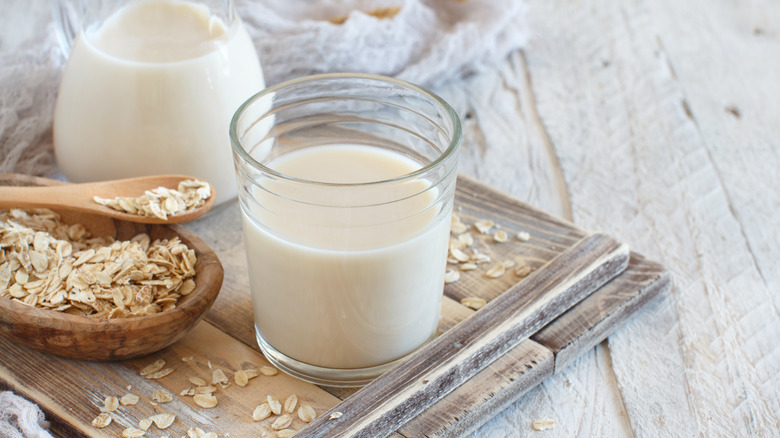The Big Difference Between Skim And Whole Milk
Despite the recent pushback against milk, with some claiming that milk causes certain health problems, the beverage is still a nutrient-dense drink that is consumed by many people in the United States, with 40 billion pounds being sold in 2021, according to Statista. Milk contains many nutrients that benefit people of all ages, including calcium, potassium, and vitamin B12 (per the Better Health Channel), which is why it's given to kids in schools across the country.
Consumers have choices in their milk, such as cow or goat's milk, chocolate or regular, and whole or skim. However, these choices, especially between whole and skim milk, can be confusing for some people. Is there a significant difference between the two? Why should you choose one over the other? For many years, nutrition experts have said that skim cow's milk is the best for a healthy lifestyle, according to Healthline. Is that still the case?
Whole milk and skim milk have different fat content
Despite the numbers and different names, learning the difference between the types of cow's milk is simple. First, all types of cow's milk – whole, 2%, 1%, skim, and fat-free – have nearly identical nutrient levels, according to bistroMD. The main difference between all of them is their fat content. People have preferences for their favorite type of cow's milk because the different fat percentages can change the taste and flavor.
As the name suggests, the fat content is the percentage of fat by weight of the total amount of liquid. In general, whole milk is 3.25% fat, while skim milk removes most of the fat, bringing the percentage down to less than 0.5%, according to Healthline. Because of the higher fat content, numerous guidelines have suggested avoiding whole milk to avoid unhealthy weight gain. However, Healthline notes that this claim seems to be overblown. In the end, choose the type of milk you like for your lifestyle.


